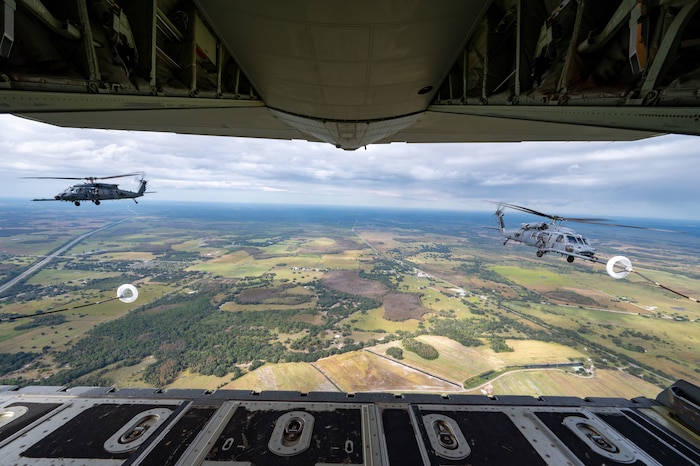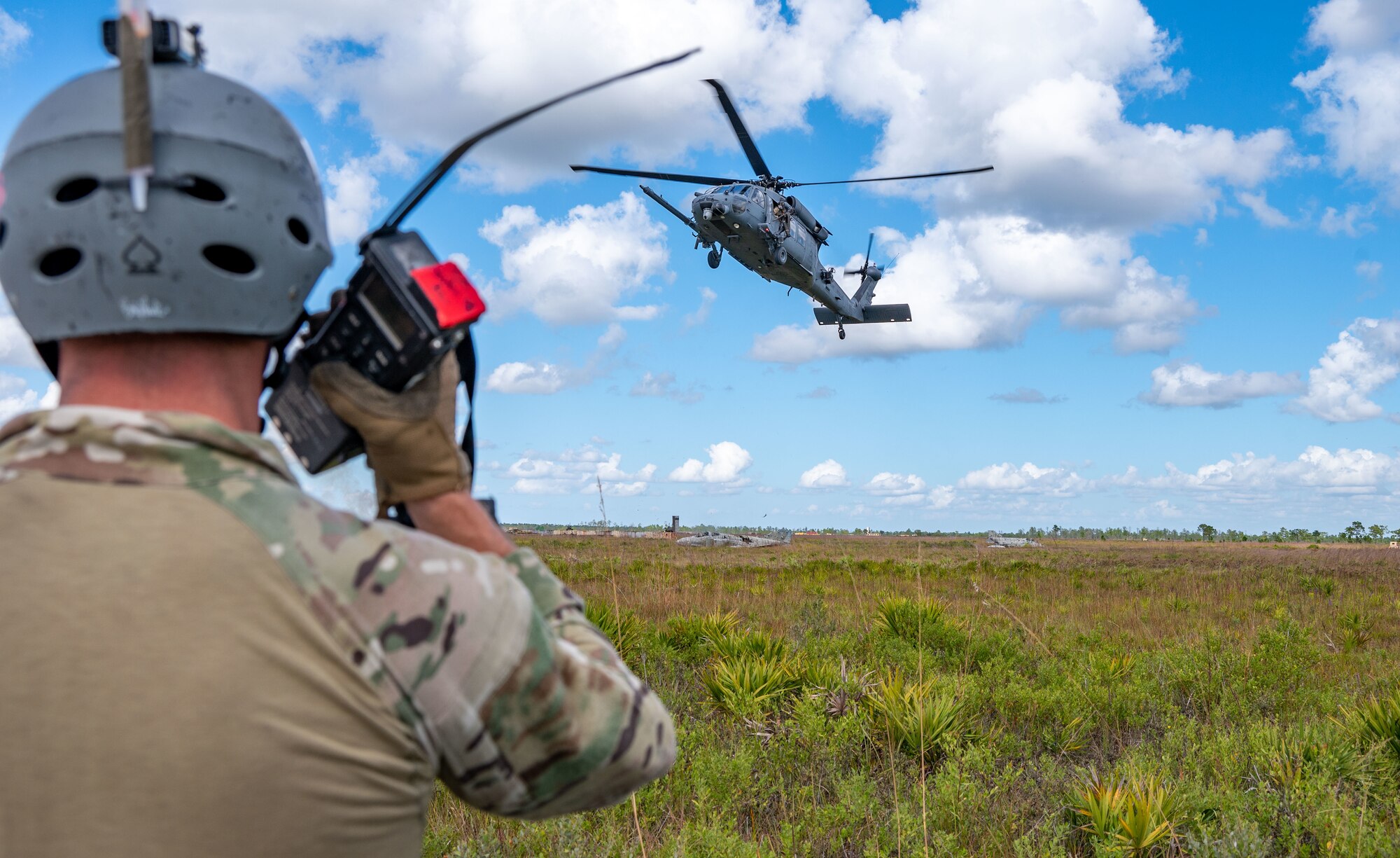301st Rescue Squadron hosts skills-based rescue competition
The 301st Rescue Squadron hosted their annual, week-long “Turkey Shoot” competition where seven Air Force combat search and rescue helicopter squadrons, piloting the HH-60G and HH-60W, competed in combat search and rescue skills events here Nov. 6 – 10.
The competing helicopter squadrons included the 41st RQS, Moody Air Force Base, Georgia; the 55th RQS, Davis-Monthan AFB, Arizona; the 56th RQS, Aviano AFB, Italy; the 101st RQS, New York Air National Guard; 512th RQS, Kirtland AFB, New Mexico; the CSAR Combined Test Force, Nellis AFB, Nevada; and the 301st RQS, Patrick Space Force Base, Florida.
Events in which the CSAR squadrons competed included weapons employment using the .50 caliber machine gun and mini-gun, helicopter air-to-air refueling, degraded navigation, degraded search and confined hoisting.
HAAR is a method of inflight refueling in which the helicopters connected to the hose-and-drogue system of a 920th Rescue Wing’s HC-130J Combat King II aircraft.
Degraded navigation called for aircrew to simulate an adversary has denied the use of GPS for navigation whereas during the degraded search event, aircrew simulated that an adversary was able to deny some of the capabilities of the survival radios the simulated isolated person was using on the ground.
Confined hoisting for helicopter rescue is a technique used to extract individuals from tight or inaccessible spaces, such as dense forests or narrow canyons, and can involve either lowering a rescue specialist to the isolated person or lowering the hoist system to the survivor to then lift the rescued person up into the helicopter.
Hosting a skills-based competition that brings together CSAR squadrons from around the world allows for valuable training and skill development as participants can learn from each other’s techniques, tactics and experiences. This cross-sharing of knowledge enhances the overall effectiveness of CSAR operations globally. Additionally, this competition provided an opportunity for benchmarking and evaluation, allowing different squadrons to assess their capabilities and identify areas for improvement.
“CSAR is more relevant than ever, and we have seen that in many recent exercises and deployments. This competition hones critical skills and sets high benchmarks for aircrews to pursue,” said Maj. John Tucciarone, 301st Rescue Squadron pilot and event project officer.
The term “Turkey Shoot” refers to a situation in warfare where one side, usually with a significant advantage in firepower or technology, inflicts heavy casualties on the opposing side with relative ease. The term is often used to describe a lopsided, or one-sided, engagement where the outcome is heavily skewed in favor of one party.
The Top Squadron award, a combination of the best team with the fastest time, the best pilot overall score and the best special missions aviator score went to the 101st RQS which operates the HH-60G.
“Such a large gathering of CSAR squadrons from across the globe sets a standard for interoperability that will make CSAR successful at the scale required for future conflicts,” said Tucciarone.
Based on the scores, even though the newest CSAR helicopter, the HH-60W, greatly outperformed the older HH-60G, it was the experience of the 101st RQS ANG pilots and flight engineers that allowed them to edge out the top squadron.
The Top Pilot award went to Maj. Conrad “Chocks” Lochocki from the 301st RQS.
The Top Flight Engineer award went to Tech. Sgt. Chris “Burnout” Kersey from the 512th RQS.



